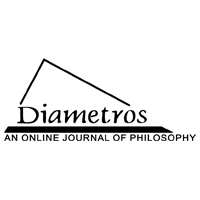

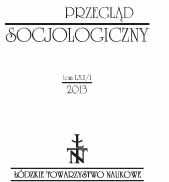
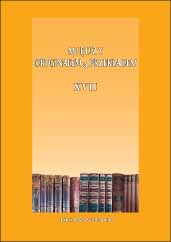
Keywords: Quebec Literature; Polish Translations; Paratexts; Internet
The present article aims to offer a general introduction to the phenomenon of paratexts in the space of the Internet. In particular, the analysis concentrates upon the example of allographic paratexts of Quebec literary works, whose Polish translations were published throughout the first decade of the 21st century. The study embraces both the editorial paratexts – which become epitexts in the virtual reality of the Net – as well as descriptions of, and opinions on, selected novels, which originally appeared on the Internet independently of the publication of their „traditional” editions. In the case of epitexts in general, the analyzed text corpus performs its primary function, which is that of presentation and recommendation. In the case of epitexts created by Internet users, however, their primary function is that of evaluation ― a function characteristic for write-ups and reviews.
More...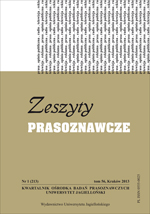
Keywords: journalistic information; discourse theory; linguistic relativism; Grice’s cooperative principle
The aim of this article is to reflect on the collision between the assumed, genologically-conditioned function of journalistic information and the communicative practice. Attention is paid to the linguistic relativity, treated here as a multi-levelled phenomenon, and to Grice’s idea of linguistic cooperation. An analysis of journalistic information published on the Internet is used as scientific argumentation in the article. Two conclusions are drawn on this basis. First, the world presented in journalistic information cannot be information, it has to be interpretation because lack of objectivity is the price that man pays for obtaining knowledge about the world. Second, this lack of objectivity is ignored in the process. Within linguistic communities, speakers assume that the objectivity of judgment is a fact. This is manifested in the form of normative expectations towards journali
More...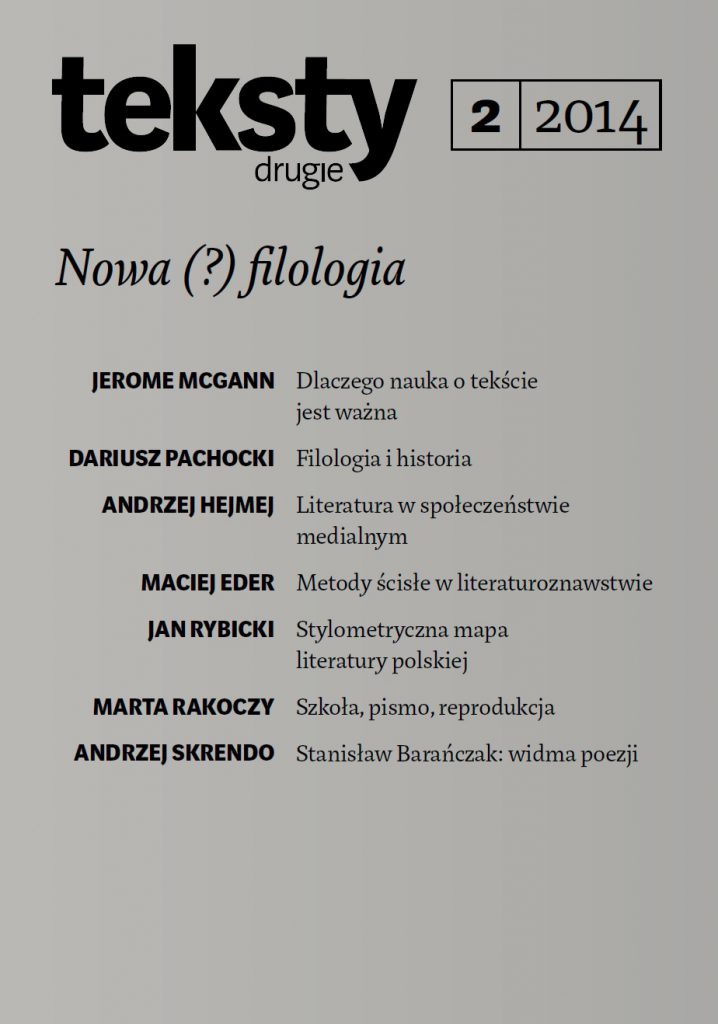
New media culture requires from a contemporary receiver a wide spectrum of competence in numerous and various disciplines and fields. Contemporary researcher of the above phenomena needs a set of new skills that would enable him or her to deal with the variety of research problems. Comparative literature, defined as a “meta-discipline” or a “discipline beyond discipline” seems to provide a solution to this situation, as the idea of transdisciplinarity sets a trend in the development of contemporary humanities.
More...
The article provides a reconstruction of the parabolic reading of the works by Dietrich Bonhoeffer and Erich Fromm – testimonies of the witnesses of German Nazism of 1930s and 40s. – as present in Stanisław Barańczak’s essays from mid 70s which address the authoritarian reality of the People’s Republic of Poland and the dilemmas of Polish opposition of the 1960s. and 70s. The second part of the article is devoted to the reflection on the influence of both authors on Barańczak’s New Wave poetry, especially of the elements of Bonhoeffer’s preaching rhetoric on Barańczak’s poetic volume Sztuczne oddychanie (1974).
More...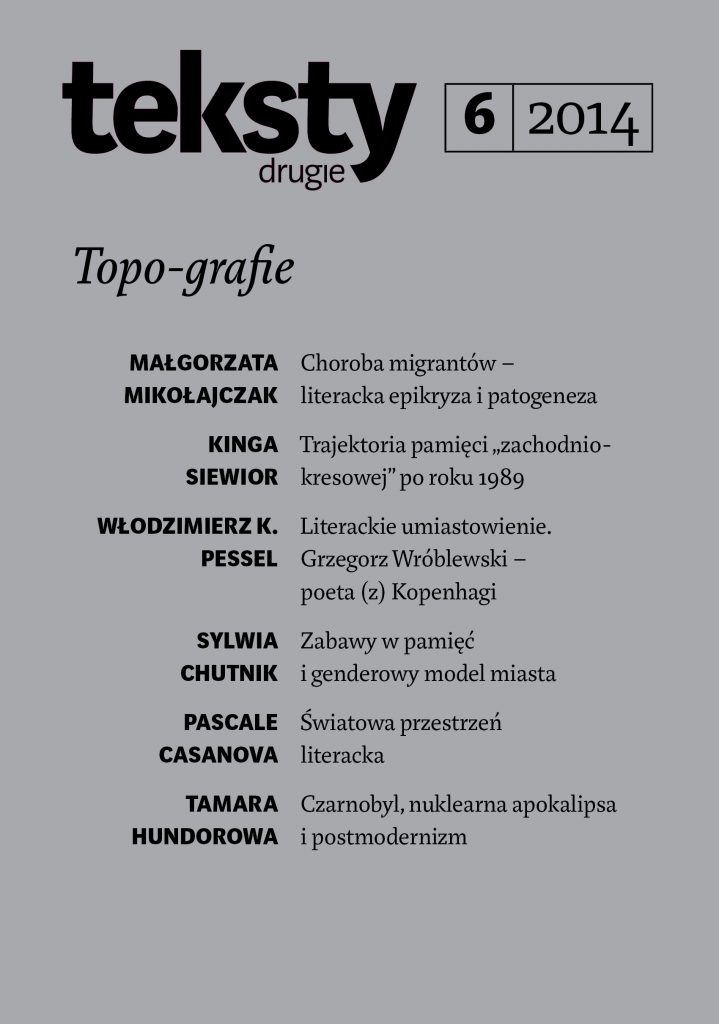
Wójtowicz proposes the new concept of affective heterotopia – a research category that builds on Michel Foucault’s typology as well as on works by Hentri Lefebvre, Derek Gregory, and Edward Soja. Wójtowicz’s analysis of the real heterotopic space and the dynamics of its transformations is enriched by another aspect – affectivity. The subject of study is the Staszic Palace in Warsaw, the seat of the Polish Academy of Sciences. At different times in history this place has functioned as a catalyst for activities that aimed to revolutionize the mental landscape of the collective. The literary works of Wacław Berent dedicated to this place open up a second research perspective. What is more, Wójtkowicz proposes a methodology based on collaboration between humanities scholars and architects – a collaboration that would invert earlier approaches where literary scholars tended to draw on other disciplines
More...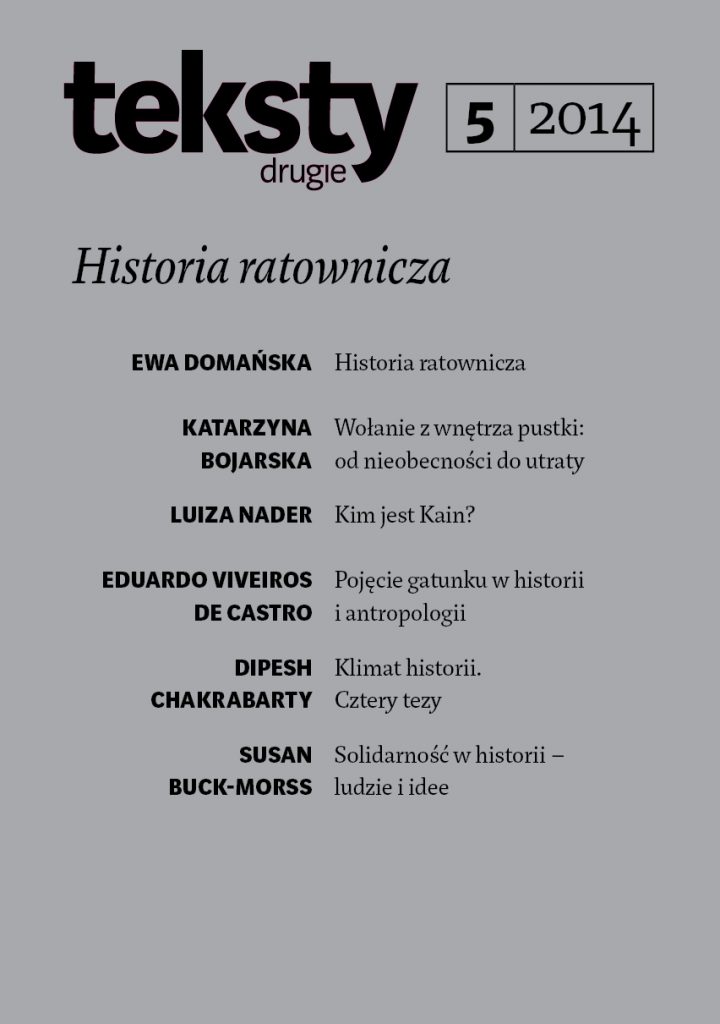
This article examines the image, propagated by Communist State propaganda, of working class men and women as builders of Socialism. Florczyk juxtaposes this ideologically motivated image with eyewitness accounts of the actual role of Polish workers. Visual sources and workers’ memories suggest that Poland’s political system in the 1950s was in many ways reminiscent of a labour camp. Florczyk investigates the propaganda mechanism by focusing on labourers’ difficult living and working conditions in the years when the foundations of Socialist Poland were laid. Rescue history in this context should be understood as the recovery of the workers’ history, especially the history of female workers, who have remained on the margins of scholarly interest. Florczyk’s second goal is to show that by acting as a unified group, people can transform even a repressive political system. The Poles’ dissent took the form of negating the negative definition for freedom; articulating their dissatisfaction, workers showed that to be free is to be able to say “No!”
More...
R. Braidotti, The Posthuman. Polity Press, Cambridge 2013 [Po człowieku, translated by J. Bednarek, A. Kowalczyk, Wydawnictwo PWN, Warszawa 2014]. De-Centring Western Sexualities: Central and Eastern European Perspectives, ed. by R. Kulpa and J. Mizielińska, Ashgate, London 2011.
More...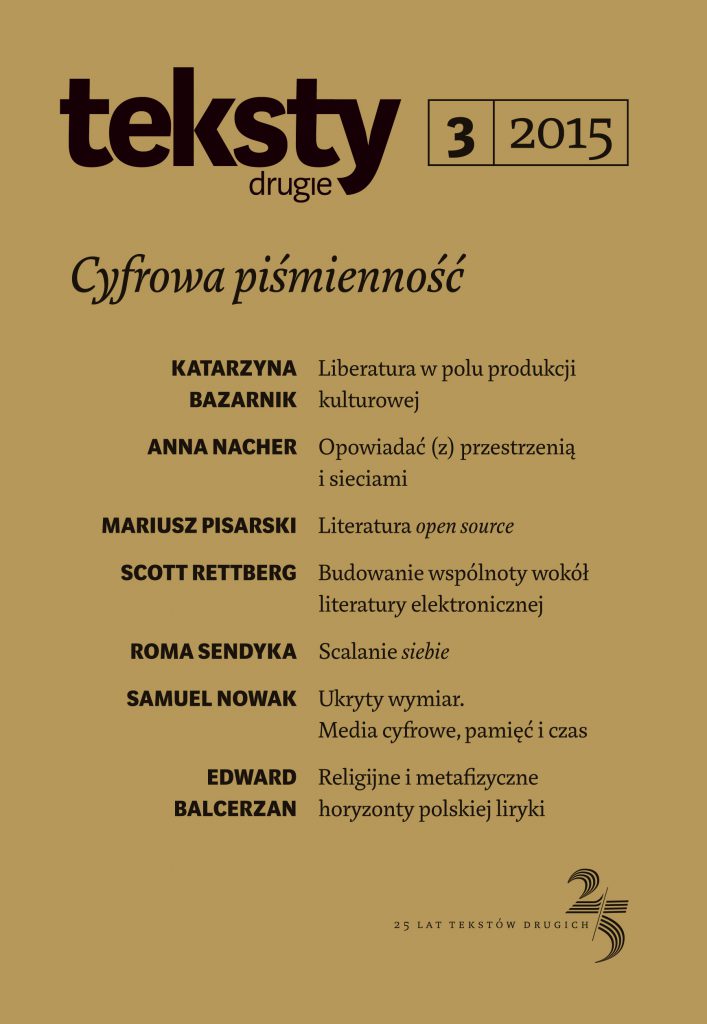
Keywords: locative narrative; locative media; meditization; hybrid space; augmented space
This article analyses the specificity of locative narratives that transgress the boundary between representation and the physical world – a phenomenon that is here concep¬tualized as the titular storytelling with space and networks. Nacher argues that when it comes to locative media, a traditional understanding of the media is inadequate, since it is grounded in social theory and communication studies – fields that emphasize the interconnectedness between the social world and representation while at the same time insisting on their clear separation. Nacher focuses her critical attention on the theory of mediatization, which, existing within a paradigm that assumes an actual separation between social life and the media, offers an interesting point of departure.
More...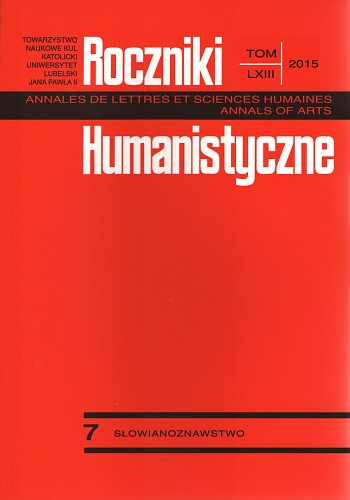
Keywords: translation;reception;literature;Slavia Orthodoxa;literature of Orthodox Slavs;the Old Serbian texts;antologies;
This work deals with the problem of the reception of the former literature of the Slavia Orthodoxa circle in Poland, which is an issue folded, multifaceted, closely connected with the specificity of the two cultural spaces, seemingly different, but as it turns out, not so distant or different in their traditions. The issue of the translation of literature of Orthodox Slavs is discussed on the example of the Old-Serbian texts, given the criterion of presence and absence of these texts in Polish circulation readership.
More...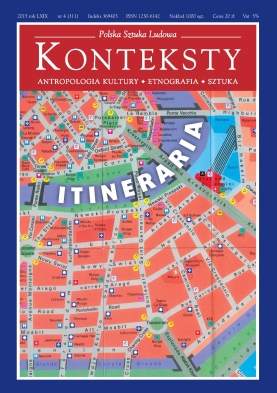
Keywords: itineraries; Vilnius; city; memory
The author focuses on the ways in which Vilnius is remembered and reconstructed by some of the most prominent Polish writers raised in that place, i.e. in the poems of Czesław Miłosz. The image of the city, remembered as an idyllic space of childhood, undergoes various metamorphoses – it is transformed by memory and nostalgia, and confronted with reality only after several decades. In her text Walentyna Krupowies analyses the complex work of memory and oblivion in the process of shaping of the literary image of the place and carefully re-reads some of the classic texts of Polish literature of the past century.
More...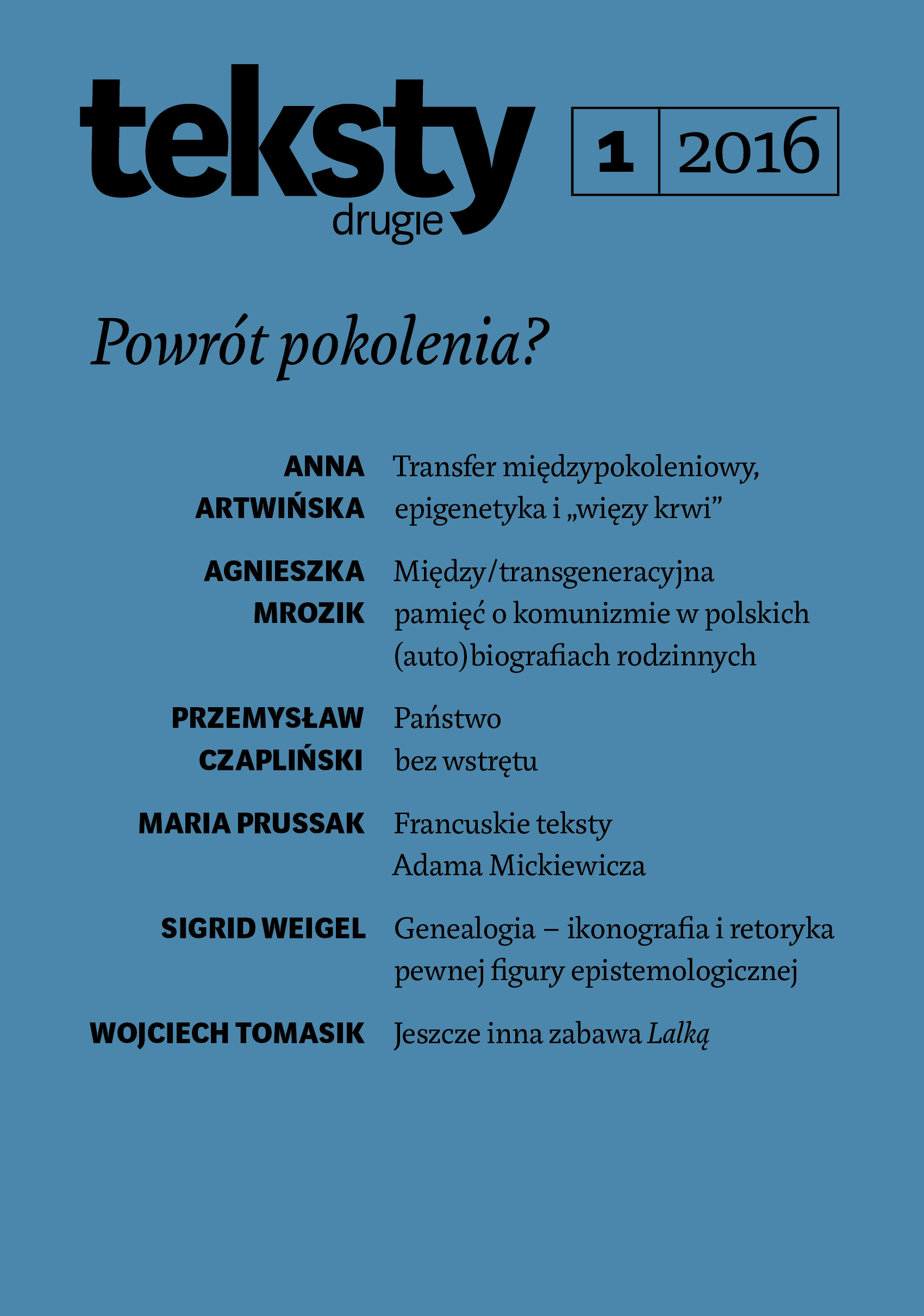
Keywords: children studies; child story; sociology of childhood; exopedagogy; posthumanism of childhood
The article presents a reconnaissance of the humanistic origins of postmodern interdisciplinary field called children studies. Szymborska identifies two opposing approaches within the mainstream of children’s research, namely the paedocentric and paedomorphic. The first is associated with the studies of Gertrud Lenzer, Sarane Boockock, William Corsaro, who have spurred on the recent transformation of child activism into children’s activist narratives in the field. Szymborska sees this phenomenon as an attempt to build a ‘child-story,’ i.e. a counter-history from child’s perspective. The second direction is rooted in Tyson Lewis and Richard Kahn’s posthumanist notions, influenced by Rosi Braidotti’s posthumanist theory. This movement proposes a non-anthropocentric, zoomorphic approach to childhood in the context of what is known as exopedagogy. These researchers’ paedomorphic annihilation of conceptual dualisms and of the hierarchy of species represents, for Szymborska, an adultocentric reduction of the child’s subjectivity to its hypostases, which are expressed in discourse through the symbiotic hybrid of the humanimal.
More...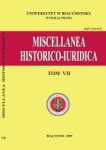
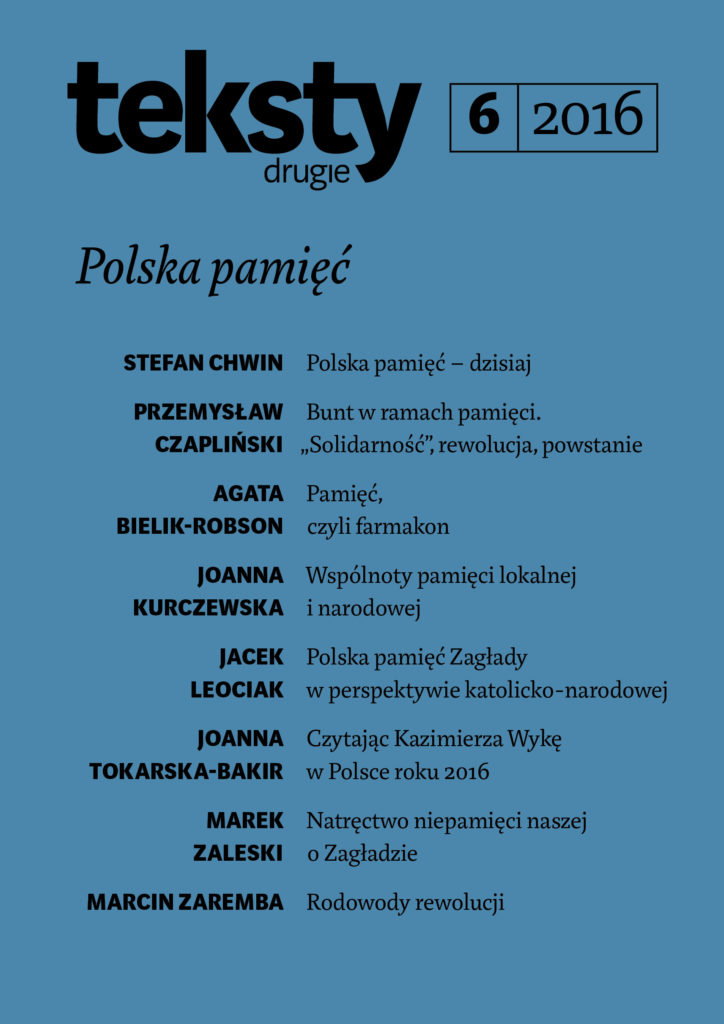
Keywords: collective memory; historiosophy; subjectivity in history; synechdoche in historiography
A key issue for Polish culture – post-partition as well as now – is the juxtaposition of two differently actualized historiosophical matrixes of memory. The matrix of the subjective narrative stresses that the Poles have (almost) always been agents or ‘authors’ of Polish history. This position foregrounds the moment where history is actively created through collective agency. By contrast, the matrix of the undermined subjectivity suggests that Poles – at least since the nation’s partitions, but perhaps even before – have not been active agents or ‘authors’ of their history. These two matrixes are key to Polish memory. They are able to function beyond the sphere of immediate political axiology, and to connect, in the art of remembering and forgetting, different groups of Poles, even those that are strongly antagonistic.
More...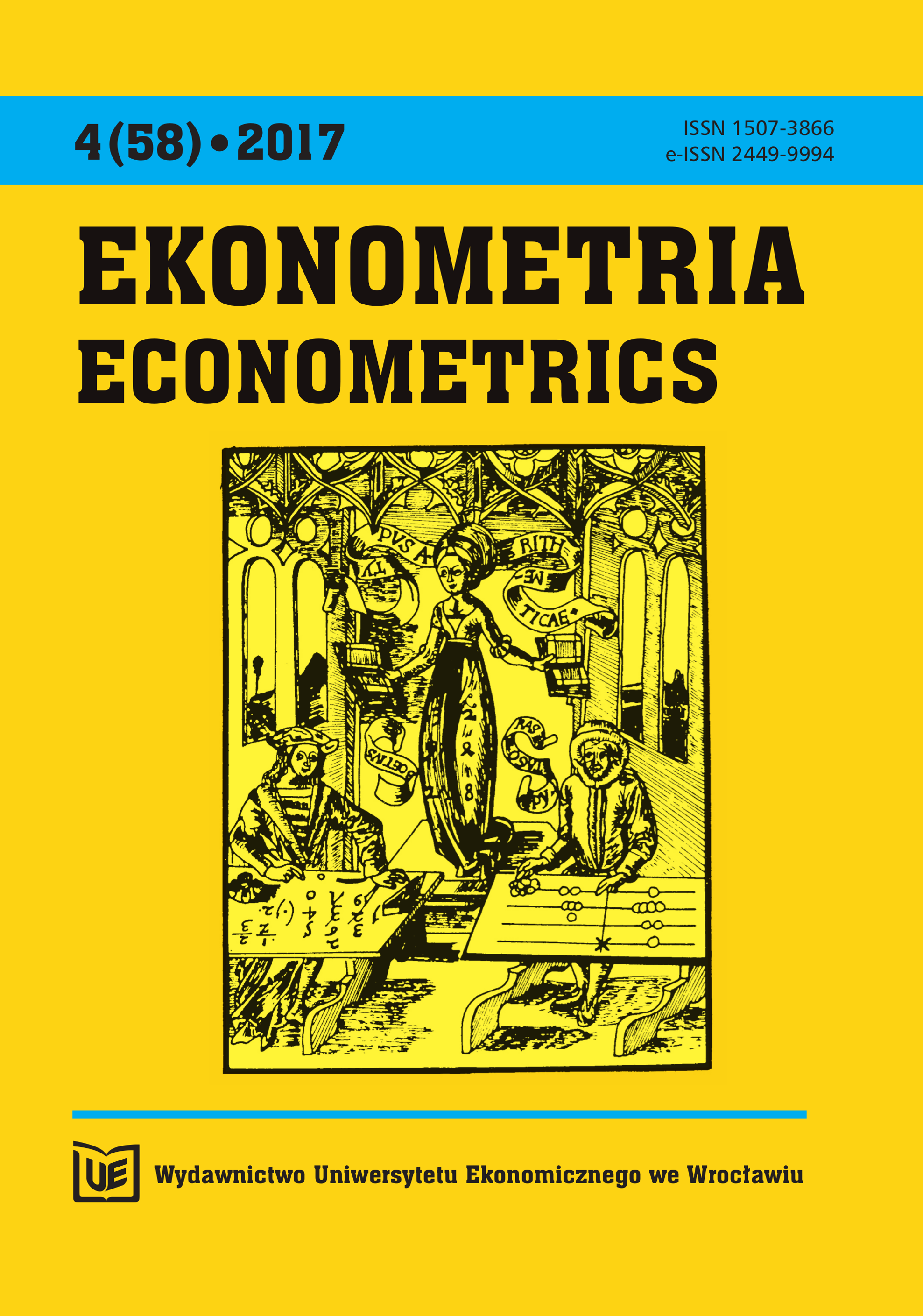
Keywords: methodological information reporting; sample selection; validity and reliability of measurement; data analysis; replicability of research;
Paper evaluates forms and scope of reporting methodological information in 100 articles on marketing and consumption published in 3 Polish scientific journals in 2016 with the use expert approach and classification trees. Analysed abstracts usually contain scant information about the method and the sample. In 3/4 of the texts, research questions or hypotheses are lacking. The information about the sample is typically limited to the sample size and sampling method, omitting reference to the population, the sample structure and the response rates. Authors are describing data collection well, although they rarely report measurements reliability (in 19% of texts) and validity (7%). The discussion of results is a rarity (12%). Half of the texts meet the minimum requirements for the transparency of the study, and two them being considered the highest standard. 60% of the texts are not replicable. The implications for authors, journals and reviewers are indicated.
More...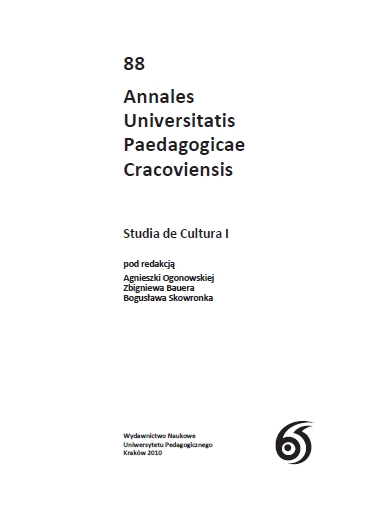
Keywords: The BirthplacePawel Lozinski;Henryk Grynberg;trauma;lieux de memoire;mnemotopos;performativity
The author presents the film directed by Paweł Łoziński, Place of Birth (Miejsce Urodzenia,1992), in the categories of a multidimensional memory place, which, as a sort of workdone on the material of the past, can be characterized by definition as an object in action,a performative. She describes the movie using the concepts of affect, trauma culture andcollaborative authorship. The movie is presented as: a comparative place of memory, anarchive, trauma experience catalyst, trauma translator, a performative shaping a non-memoryplace into a mnemotopos – depending on the perspective/status of the author instance.
More...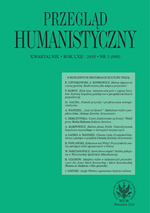
Keywords: Łukasz Surowiec; Holocaust; plants; monuments; art
The article discusses Łukasz Surowiec’s Berlin-Birkenau project under which the artistplanted in Berlin several hundred birches from the area around the Auschwitz-Birkenaucamp. The goal of the work defined by the artist was to create living monuments ofthe Holocaust and to propose the changes in the dynamics of Polish-German relations. In thearticle, I propose interpreting Surowiec’s work through the symbolic role of birches inthe history of Polish culture and environmental history of the Holocaust. Such interpretationreveals the ambiguity of the gesture of replanting trees, the inability to classify it as an act ofgiving responsibility to the Germans or Polish-German reconciliation.
More...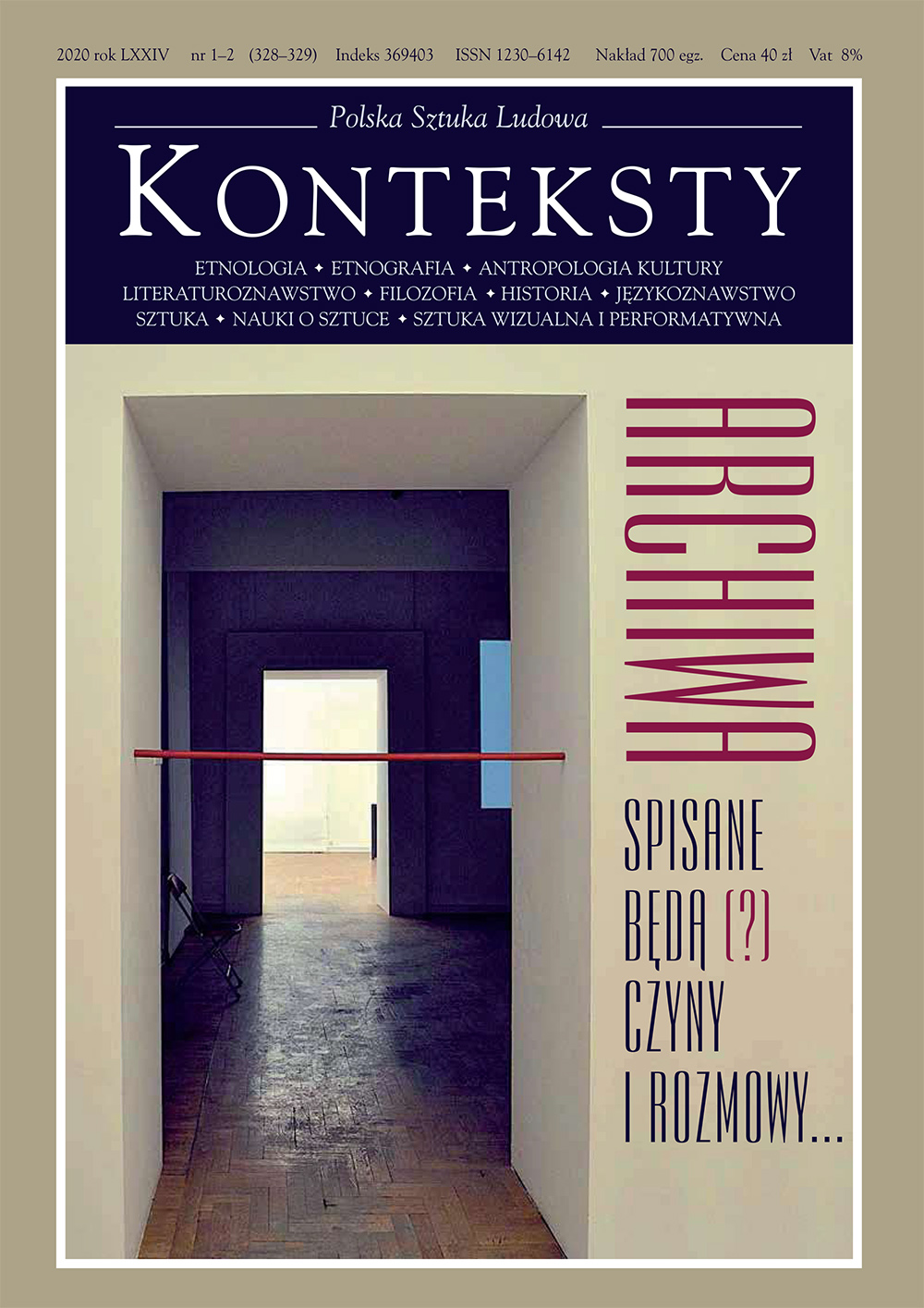
Keywords: Aleksander Wat;archive;language
An attempt at describing the Aleksander Wat archive as a space that makes it possible to present the non-identity of the text, its multi-verse nature as well as non-continuous and defective (understood as: subjected to the impact of an illness) character. In order to achieve this goal it is necessary to create a theoretical constellation in which concepts of atopy and defective subjectivity will be included; they will make it possible to draw attention to the expropriation of rough copies/typescripts from the universe of the oeuvre. The notion of topos is supported by editions prepared by researchers (Świat na haku i pod kluczem, prep. by K. Rutkowski; Publicystyka, prep. by P. Pietrych): harmonised editions re-constructing the leitmotifs of Wat’s essays and granting his scattered and deformed sketches a holistic shape. Atopy is a non-place, a seat of incohesion, in which products with an unstabilised ontological status may exist. It is precisely within atopy that texts infected with Wat’s physical and psychic dissolution could take root. The conception of the archive’s atopy is illustrated by analyses of excerpts from political essays about the Chinese-Soviet conflict – an excellent example of the dismembered body. The author of this article observes them from a poetological viewpoint: analysing their composition, seeing certain regularities in shaping the syntax, and a compulsive perpetration of always the same errors as well as curious manners of “accelerating writing” so as to keep up with thought. Thus created notes become a reflection of somatic and psychological “crushing” by assuming the form of “verbal pulp”, a logorea not subjected to the control of the conscious mind. In this way deciphering their contents proves to be a difficult task relegated to the background by the infected (and infectious) text, which changes into a “code without a message” (G. Genette).
More...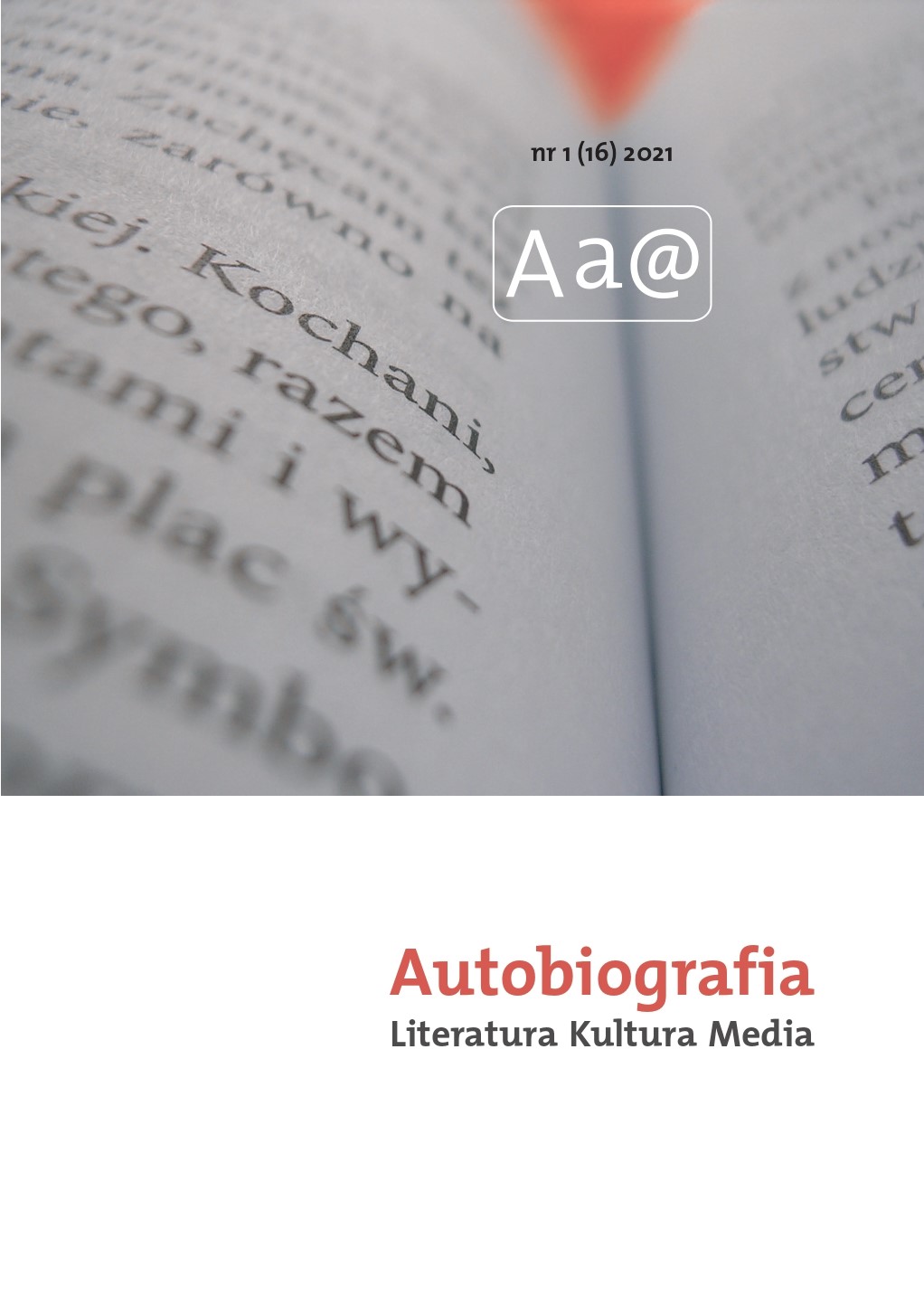
Keywords: abortion; feminism; maladicity; “Women on Waves”
This article is an analysis of the song “Women on Waves” by the band Gang Śródmieście. The artists touch upon the issue of abortion and build the whole narrative around it. However, it is not just an expression of their opinion on the subject, as the authors refer to several themes in the text. Namely, they refer to legislation, cultural situation, recall facts from public life and describe their abortion journey. The work presents the figure of a woman with an unwanted pregnancy, who has become a sick person due to her physiological condition. The search for an appropriate methodology, research tools and the possibility of presenting a holistic perspective, therefore, leads to maladic discourses, and they are one of the optics I use. The other is feminist criticism, the authors refer to its values and ideas, as I will prove in the article.
More...